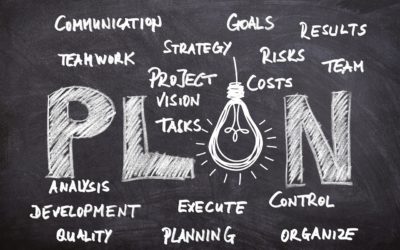Dive into the heart of strategic growth with our latest article at GrowthTailor.com. Discover how assessing your current position is not just a step, but the key to unlocking your business’s full potential. Find out why this crucial first move in strategic planning can make all the difference between stagnation and success. Join us as we reveal insights and strategies to chart a course for growth that’s not only ambitious but achievable. Curious about how well your business really stands today? Let’s uncover the answers together.
Introduction: Starting Your Strategic Business Planning Journey
Welcome back to our blog. In our ongoing series about strategic business planning, we’ve already shared insights and foundational knowledge. The first article explained that there is no need to be overwhelmed by year-end planning stress. The second post discussed how you can turn strategic business planning into a tool for growth. Today, we begin a crucial part of this journey, focusing on the first practical step in strategic planning: Assessing Your Current Position.
This article is the first in a series to guide you through each stage of the strategic planning process. We align with the practical approach of OnStrategy, ensuring that our guidance is both relevant and actionable.
Starting with an assessment of your current position is essential. It gives you a clear understanding of where your business stands today, setting the stage for future growth and success. This step is about building a strong base from which to set achievable and strategic goals.
Throughout this series, we aim to simplify the strategic planning process, making it more accessible and less overwhelming. If you’re looking for deeper insights and regular updates, we encourage you to sign up for our GrowthTailor Strategy Series newsletter.
Section 1: The Importance of Assessing Your Current Position
This section emphasises the importance of understanding the current position of a business as the first step in strategic planning, setting a solid foundation for the subsequent parts of your series.
The journey of strategic business planning begins with a critical and comprehensive evaluation of where your business currently stands. This initial assessment is far more than just an internal review; it’s a holistic analysis that sets the foundation for all future strategic endeavours. For this step we will among others make use of the materials gathered during the previous phase, Step 2 of our planning process.
1. Aligning with Vision and Mission:
Understanding your current position starts with aligning your assessment with your company’s vision and mission. This alignment ensures that your strategies are not just effective but also resonate with your core purpose and long-term aspirations.
2. Evaluating External Influences:
In today’s fast-paced business environment, external factors such as market trends, technological advancements, and competitive dynamics significantly influence your strategic position. A thorough assessment includes a keen understanding of these external elements and their potential impact on your business.
3. Embracing the Concept of Strategic Fit:
Strategic fit is about how well your organisation’s strategies align with both internal capabilities and external opportunities and threats. Assessing your current position involves evaluating this fit to ensure that your strategies are feasible and apt for your business environment.
4. The Need for Continuous Reassessment:
Strategic positioning is not a one-time task but an ongoing process. As your business environment and internal capabilities evolve, so should your understanding of your strategic position. Continuous reassessment allows for agility and responsiveness to change.
5. Incorporating Stakeholder Perspectives:
A comprehensive assessment also involves considering the perspectives of various stakeholders. This includes not just shareholders and customers, but also employees, partners, and the broader community. Understanding their needs and expectations can provide invaluable insights into your strategic positioning.
In essence, assessing your current position is about gaining a clear and objective understanding of where your business stands in relation to its internal strengths and weaknesses, as well as external opportunities and challenges. This step forms the bedrock upon which realistic, aligned, and successful strategies are built.
And please be aware that it is the first of in total four essential steps as we have earlier explained in the article “Stop the Year-End Strategic Business Planning Stress: 4 Steps to Start with Today“.
Section 2: Key Components of Current Position Assessment
This section outlines the essential elements of assessing a business’s current position, providing a structured approach for businesses to evaluate both internal and external factors.
Assessing your current position in the business landscape involves a multifaceted approach. This assessment is not just about looking inwards but also understanding the external factors that influence your business. Here, we’ll break down the key components that make up a comprehensive current position assessment.
To ensure a thorough understanding of your business’s strategic position, it’s essential to examine a range of internal and external factors. This comprehensive assessment forms the foundation for effective strategic planning. Let’s delve into the key components that should be considered:
1. Internal Analysis: The Backbone of Your Business
- Operational Review: Assess the efficiency of your business operations, looking for areas of strength and bottlenecks that may hinder performance.
- Financial Health: Analyze financial statements to understand your business’s profitability, cash flow, and overall financial stability.
- Organizational Structure and Culture: Evaluate how your organizational structure and company culture support or impede your strategic objectives.
- Employee Capabilities: Consider the skills, competencies, and morale of your workforce. Employee engagement and talent alignment are critical for executing any strategy successfully.
2. External Analysis: Understanding Your Business Environment
- Market Trends and Customer Insights: Stay informed about the latest industry trends and customer preferences that could impact your business.
- Competitive Landscape: Analyse your competitors to understand your market position and identify areas where you can differentiate.
- Technological Changes: Keep abreast of technological advancements and innovations that could affect your industry.
- Regulatory and Economic Factors: Be aware of legal and economic factors that could pose challenges or offer opportunities.
3. Vision and Mission Alignment:
- Relevance to Current Market: Ensure that your company’s vision and mission remain relevant and compelling in the current market context.
- Alignment with Strategic Goals: Align your strategic goals with your vision and mission to ensure coherence and purpose in your planning.
4. Stakeholder Perspectives: Broadening Your View
- Customers, Employees, and Partners: Gather feedback from a variety of stakeholders to gain diverse perspectives on your business’s performance and market position.
- Community and Environmental Impact: Consider the broader societal and environmental impact of your business, which can influence reputation and long-term sustainability.
By addressing these components, you gain a comprehensive view of your business’s current position. This multi-dimensional understanding is crucial for developing strategies that are not only effective but also sustainable and aligned with your company’s core values.
Section 3: Tools and Techniques for a Comprehensive Assessment
This section introduces a range of tools and techniques that are instrumental in assessing a business’s current position. Each tool is briefly explained with its application in the assessment process.
A robust assessment of your current position requires a blend of strategic tools and techniques. These methods provide the insights needed to understand your business comprehensively. Let’s explore the key tools that can enrich your assessment process:
1. Vision-Mission Alignment Assessment:
Technique: Utilize tools like alignment matrices or workshops to evaluate how your current operations and strategies align with your company’s vision and mission. This ensures that your strategic objectives are not just effective but also resonate with your core purpose.
2. Enhanced Stakeholder Analysis:
Tools: Employ stakeholder mapping and power-interest grids to identify and understand the influence and expectations of different stakeholder groups. This analysis is crucial for aligning your strategies with stakeholder needs and expectations.
3. Scenario Planning:
Application: Use scenario planning for external analysis. Develop and analyze multiple plausible future scenarios to anticipate potential risks and opportunities. This helps in creating flexible and adaptable strategic plans.
4. Financial Ratio Analysis:
Usage: Delve into financial health with ratios like profitability, liquidity, and solvency. These ratios provide objective data on your financial position and performance.
5. SWOT and PESTLE Analyses:
SWOT: A classic tool for internal and external environmental scanning, identifying strengths, weaknesses, opportunities, and threats.
PESTLE: Analyze external macro-environmental factors that could impact your business, including political, economic, social, technological, legal, and environmental factors.
6. Technology-Driven Tools:
Data Analytics and BI Software: Leverage technology for data collection and analysis. Tools like business intelligence software can process large data sets to reveal trends, patterns, and insights that might otherwise be missed.
7. Customer Feedback Mechanisms:
Surveys and Focus Groups: Regularly gather and analyse customer feedback to guide product or service improvements and align your strategies with market needs.
By integrating these tools and techniques into your assessment process, you ensure a thorough understanding of your strategic position. They provide the necessary insights for developing informed, aligned, and effective strategic plans.
Section 4: Gathering and Analysing Data
This section outlines the process of gathering and analysing data for assessing a business’s current position, emphasising the importance of a thorough and evidence-based approach.
The effectiveness of your strategic planning hinges on the accuracy and comprehensiveness of your data gathering and analysis. This phase is critical in translating insights into actionable strategic decisions. Here’s how to approach this vital process:
1. Comprehensive Data Collection:
- Internal Data: Gather data from various internal sources such as financial reports, operational metrics, employee performance data, and internal surveys. This data provides a clear picture of your internal capabilities and areas for improvement.
- External Data: Collect external data including market research, competitor analysis, industry trends, and customer demographics to understand the market dynamics and external forces impacting your business.
- Vision and Mission Relevance: Assess how well your current operations and market position align with your company’s vision and mission. This may involve collecting feedback from leadership and key stakeholders about the perceived alignment and relevance.
2. Advanced Data Analysis Techniques:
- Trend Analysis: Identify trends in your data over time, looking for patterns that could inform future strategies.
- Predictive Analytics: Use advanced analytical methods to predict future trends based on your current data, helping you anticipate market changes and plan accordingly.
- Comparative Analysis: Benchmark your data against industry standards or competitors to understand your relative market position.
3. Synthesizing and Interpreting Data:
- Integrated Analysis: Combine insights from both internal and external data sources to create a holistic view of your strategic position.
- Stakeholder Input: Incorporate feedback from various stakeholders to ensure your analysis considers diverse perspectives and aligns with stakeholder expectations.
- Scenario Planning Outcomes: Include insights from scenario planning to prepare for various future possibilities and uncertainties.
4. Reporting and Utilising Data:
- Clear Documentation: Maintain detailed records of your data sources, methodologies, and findings for reference and accountability.
- Actionable Reports: Create reports that not only summarize findings but also provide actionable insights and recommendations for strategic decisions.
Gathering and analysing data with this comprehensive approach ensures that your strategic planning is informed, relevant, and aligned with both your internal capabilities and the external business environment. It forms the basis for informed decision-making, setting a path for future growth and success.
Conclusion: Laying the Foundation for Strategic Success
As we conclude our exploration of the first crucial phase in strategic business planning – Assessing Your Current Position – it’s evident that this step is foundational to the entire process. Through a comprehensive analysis of internal capabilities, market dynamics, and alignment with the company’s vision and mission, we’ve laid the groundwork for informed strategic decision-making.
A Holistic Approach to Strategic Planning:
Our journey through the assessment process has highlighted the importance of a comprehensive approach. By considering internal operations, financial health, external market dynamics, stakeholder perspectives, and aligning with the company’s vision and mission, we’ve laid a robust foundation for strategic planning.
The Power of Informed Decision-Making:
The insights gained from a thorough assessment empower businesses to make informed decisions. These decisions are not just reactive responses to current market conditions but proactive strategies that guide long-term growth and sustainability.
Setting the Stage for Future Articles:
Looking forward, these insights will form the basis of our next critical step: Developing the Strategy. In our upcoming article, we’ll delve into how to translate the rich understanding gained from our current position assessment into a robust and actionable strategic plan.
Don’t forget to sign up for our GrowthTailor newsletter for more insights and updates on strategic business planning.
Join Us on This Strategic Journey
We invite you to stay connected as we unfold the subsequent phases of strategic planning. Our upcoming article, “Develop the Strategy,” will delve into translating your current position assessment into actionable strategies.
Don’t forget to sign up for our GrowthTailor newsletter for more insights and updates on strategic business planning.
Thank you for joining us on this journey toward strategic mastery. We look forward to being a part of your business’s growth story and guiding you through every step of your strategic planning journey.
[mailerlite_form form_id=5]



